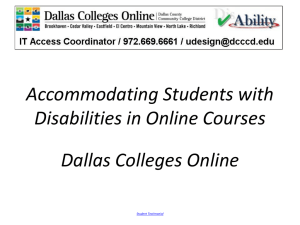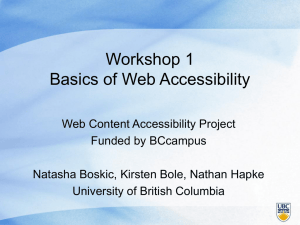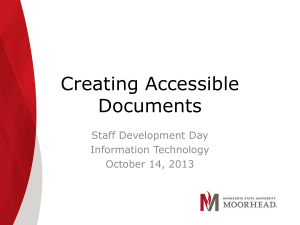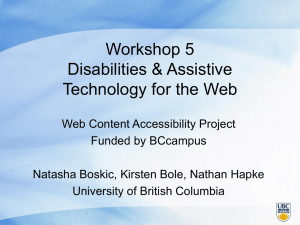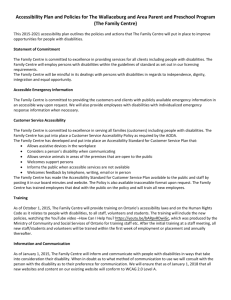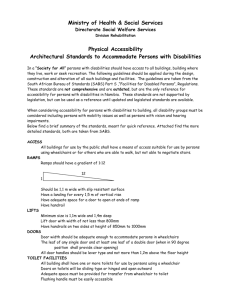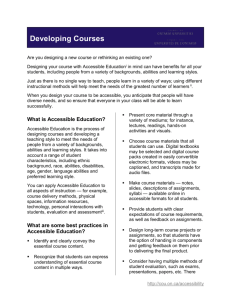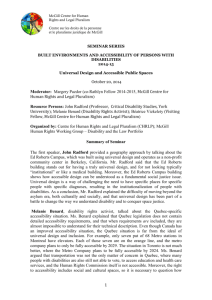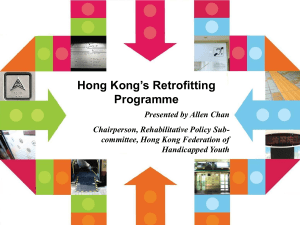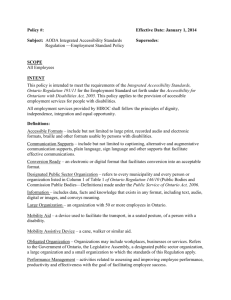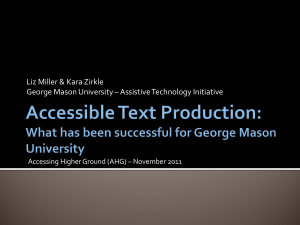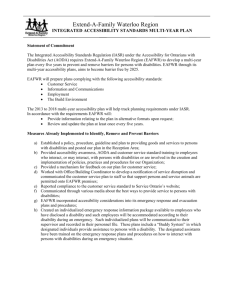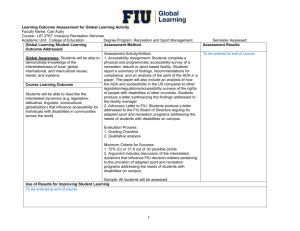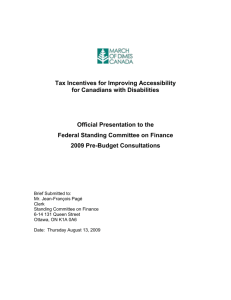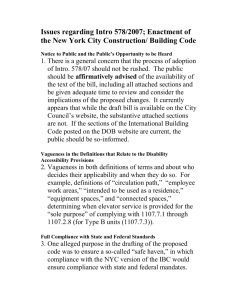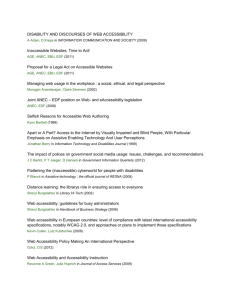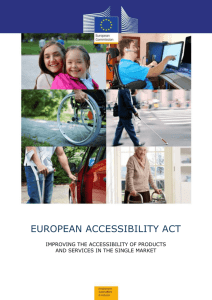to the letter - Society for Disability Studies
advertisement
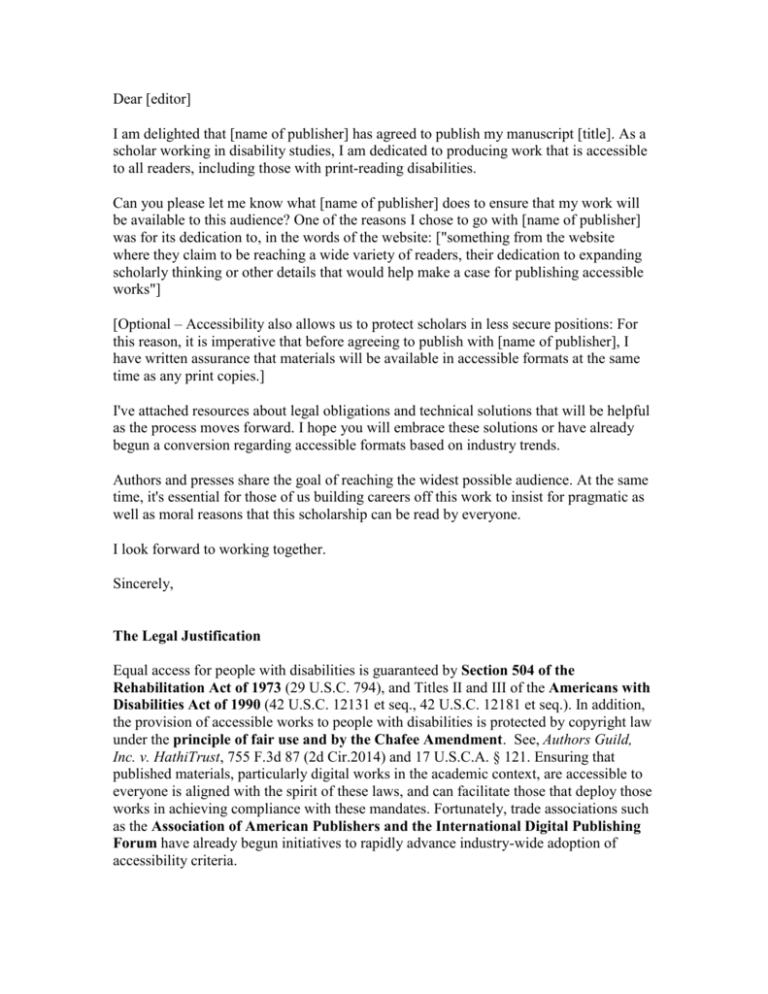
Dear [editor] I am delighted that [name of publisher] has agreed to publish my manuscript [title]. As a scholar working in disability studies, I am dedicated to producing work that is accessible to all readers, including those with print-reading disabilities. Can you please let me know what [name of publisher] does to ensure that my work will be available to this audience? One of the reasons I chose to go with [name of publisher] was for its dedication to, in the words of the website: ["something from the website where they claim to be reaching a wide variety of readers, their dedication to expanding scholarly thinking or other details that would help make a case for publishing accessible works"] [Optional – Accessibility also allows us to protect scholars in less secure positions: For this reason, it is imperative that before agreeing to publish with [name of publisher], I have written assurance that materials will be available in accessible formats at the same time as any print copies.] I've attached resources about legal obligations and technical solutions that will be helpful as the process moves forward. I hope you will embrace these solutions or have already begun a conversion regarding accessible formats based on industry trends. Authors and presses share the goal of reaching the widest possible audience. At the same time, it's essential for those of us building careers off this work to insist for pragmatic as well as moral reasons that this scholarship can be read by everyone. I look forward to working together. Sincerely, The Legal Justification Equal access for people with disabilities is guaranteed by Section 504 of the Rehabilitation Act of 1973 (29 U.S.C. 794), and Titles II and III of the Americans with Disabilities Act of 1990 (42 U.S.C. 12131 et seq., 42 U.S.C. 12181 et seq.). In addition, the provision of accessible works to people with disabilities is protected by copyright law under the principle of fair use and by the Chafee Amendment. See, Authors Guild, Inc. v. HathiTrust, 755 F.3d 87 (2d Cir.2014) and 17 U.S.C.A. § 121. Ensuring that published materials, particularly digital works in the academic context, are accessible to everyone is aligned with the spirit of these laws, and can facilitate those that deploy those works in achieving compliance with these mandates. Fortunately, trade associations such as the Association of American Publishers and the International Digital Publishing Forum have already begun initiatives to rapidly advance industry-wide adoption of accessibility criteria. Built-In Accessibility (the best solution) The technical specifications: Materials must be in EPUB 3.0 or later format with true, reflowable text embedded in themnot screen images. This makes it possible to resize the text (for readers with low vision) and read aloud (for readers using screen access software). Progress is already being made on this front, you can refer to the International Digital Publishing Forum Accessibility Guidelines and the Association of American Publishers' EPUB 3 Implementation White Paper for more information. If DRM (digital rights management) which sometimes creates a barrier that makes it impossible for accessibility software to access the textis going to be used, a DRM-free version must be available to persons with documented disabilities. The process for accessing a DRM-free version should be straightforward. Currently Adobe InDesign (the program used by most large book designers) has built-in features for checking accessibility, but these should be test-run with actual users of screen access software since the tools for checking accessibility are still a work in progress. It is important to remember that many charts and graphs are also unrecognizable to screen access software. Numeric tables replicating chart data should be provided. Instead of using color-coding for charts and graphs, differences in line style or “texture” should be used so that the chart can be understood in black and white. Data tables should never be converted into images, and basic accessibility guidelines need to be followed for table headers, titles, and so on. Images, maps, and figures appearing in books must include a nonvisual text description, particularly when the images are central to the themes, arguments, findings, and/or narrative of the book. In this way, readers using screen access software can still have access to these important features of the book. Alternative Services Publishers have long made books available by depositing copies with the National Library Service for the Blind and Physically Handicapped (NLS) in the Library of Congress [http://www.loc.gov/nls/reference/guides/readingdisabilities.html]. There is also Learning Ally [https://www.learningally.org] Free to all registered users with printreading disabilities, these services can take months and sometimes years to make content available, and thus are not ideal for today's scholars. A quicker option is uploading books for free through Bookshare.org, which makes copies of many books available to students and others with documented print-reading disabilities. To learn more about how this works, visit: https://www.bookshare.org/cms/partners/publishers.


